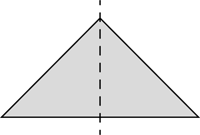|
|
Daily Practice and Problems |
Lesson |
Homework |
Assessment |
Student Books |
Student Guide |
|
|
|
|
| Student Activity Book |
|
|
|
|
Teacher Resources |
Teacher Guide - digital |
|
|
|
|
Supplies for Students
scissors
tape
blank sheet of paper
ruler or straight edge
construction paper
one set of Power Polygons™ (Shapes A–O)
Materials for the Teacher
Professor Peabody's Snowflake Master (Teacher Guide), optional
Geometry Word Chart from previous lessons
Unit 9 Assessment Record
one set of Power Polygons™ (Shapes A–O)
scissors images of snowflakes chart paper
Materials Preparation
Snowflakes. Find images of snowflakes to share with the class. Some of the best are photographs by Wilson A. Bentley of Jericho, Vermont. During his life he photographed thousands of snowflakes and published a book, Snow Crystals, and numerous articles on the subject. Some images are in the Student Guide.
Prepare Snowflakes. Have a student carefully cut out the snowflake on the Professor Peabody's Snowflake Master keeping the rest of the page intact.
Geometry Word Chart. Prepare sheets of chart paper for the Geometry Word Chart. The class will need two clean sheets during Summarizing the Lesson. Write “Lines of Symmetry” on top of one and “No Lines of Symmetry” on the other.



















